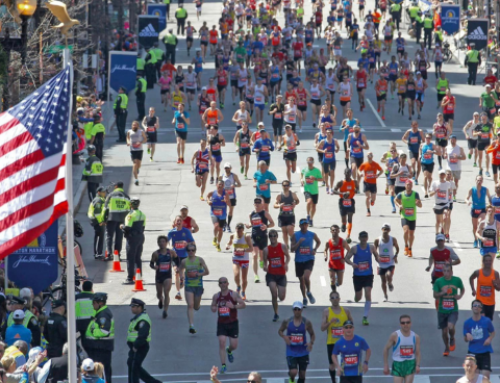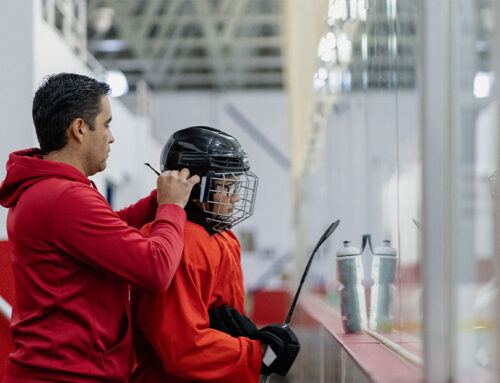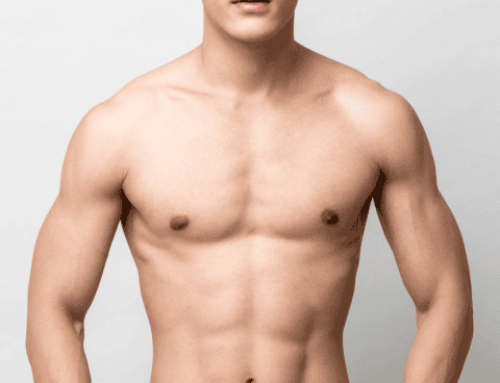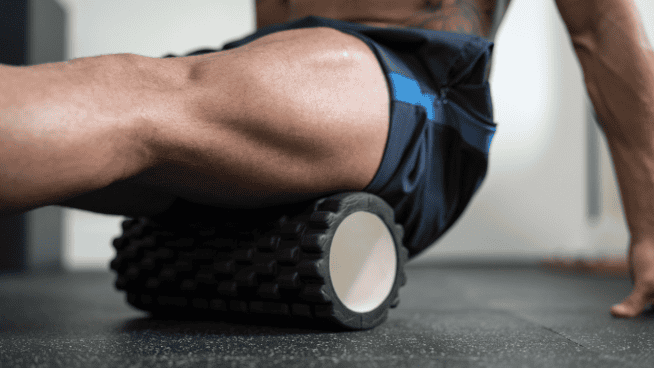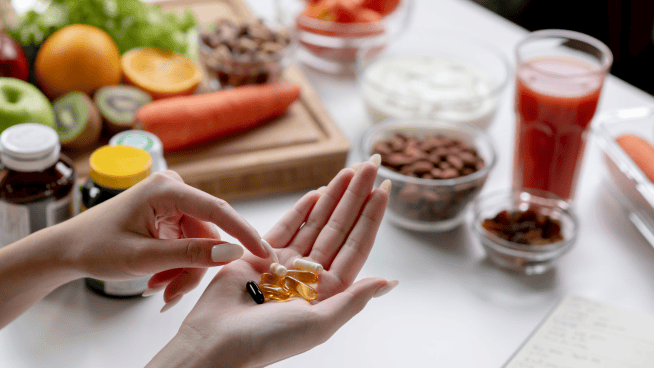You Need These 4 Fitness Training Accessories
Whether you’re in the beginning stages of your fitness journey or a seasoned veteran looking to improve your physique and athleticism, a few pieces of fairly inexpensive equipment (that don’t take up much space at home) can help you reach your goals.
If you add these four fitness training accessories to your gym bag, you’ll wonder how you ever trained without them.
1. Muscle Roller
A foam roller might look like something you take to the swimming pool, but it works best when dry. Rolling increases blood circulation, which leads to more nutrient-rich blood being transported to the muscles to kickstart the recovery process. You can also use a roller to warm up muscles before a workout without impacting the joints.
If you’re dealing with a tight muscle, a roller is a great form of self-applied therapy that can lengthen the muscle fibers and help increase your range of motion. This can be a big advantage for competitive athletes after a hard practice or game.
Although the most popular rollers are foam, they shouldn’t be very soft. Firm rollers might feel uncomfortable when you begin using them, but they work best over the long term.
RELATED: Improve Flexibility With Four Foam Rolling Exercises
2. Weighted Vest
If you’re trying to drop weight, why would you add something that makes you even heavier? The more weight you’re carrying, the more calories you burn.
Most weighted vests have individual weights that increase the amount you’re carrying by up to 20 pounds. When you run with a weighted vest, your body works harder since it’s not used to the heavier load. This means more calories burned, and over time, possibly a lower number on the scale.
Vests are not restricted to people who need to lose weight. If you’re a CrossFit athlete or someone who uses bodyweight exercises like Pull-Ups or Dips in their training program, you can use the vest to increase weight to add resistance.
RELATED: Six Rules for Weight Vest Training
One approach is a “drop set” where you perform an exercise to failure with the vest, then take a few seconds to remove the vest and continue the set with your body weight only. This intensity-booster can force the muscles to work harder than they are used to, which means they will have to adapt and get stronger.
Football players can use the vest to improve speed. Train to reach a certain 40-Yard Dash time with the vest, and you’ll be certain to improve your time without it.
Basketball players can incorporate a vest to help with vertical jumps. Train without the vest to warm up, add the vest and try to reach the same height you could without it.
Make sure the weights on your vest are adjustable so you can switch up the level of difficulty.
3. Kettlebells
Kettlebells were originally created in Russia during the 1700s to weigh crops. Farmers also liked to use them as a way to show off their strength. Centuries later, kettlebells became a training tool of the Soviet army, and now you can’t walk into a gym without seeing them lying around.
Done with lighter resistance, a kettlebell workout can be both aerobic and anaerobic, making your overall workout less time-consuming. Competitive athletes can use kettlebells to increase stabilization strength as well as coordination, since the weight is distributed differently than with a dumbbell or barbell.
RELATED: 5 Best Kettlebell Exercises to Build Explosive Power
If you decide kettlebells are for you, consider buying a variety of weights so you have options if a weight gets too light.
4. Chalk
Why do basketball superstars like Michael Jordan or LeBron James cover their hands with chalk before tip-off? It helps them keep a solid grip on the ball when their hands get sweaty. Better grip translates to more accurate passes and shots.
This same theory applies to using chalk in the weight room. It’s difficult to train your muscles effectively if you can’t hold on to the object you’re using. A firm grip plays a crucial role in maximizing your ability to properly execute an exercise.
Although powdered chalk is by far the most popular form, you can use liquid chalk if your gym doesn’t allow chalk because of the mess it can create.
RELATED: What to Do With the Weightlifting Accessories at Your Gym
[cf]skyword_tracking_tag[/cf]RECOMMENDED FOR YOU
You Need These 4 Fitness Training Accessories
Whether you’re in the beginning stages of your fitness journey or a seasoned veteran looking to improve your physique and athleticism, a few pieces of fairly inexpensive equipment (that don’t take up much space at home) can help you reach your goals.
If you add these four fitness training accessories to your gym bag, you’ll wonder how you ever trained without them.
1. Muscle Roller
A foam roller might look like something you take to the swimming pool, but it works best when dry. Rolling increases blood circulation, which leads to more nutrient-rich blood being transported to the muscles to kickstart the recovery process. You can also use a roller to warm up muscles before a workout without impacting the joints.
If you’re dealing with a tight muscle, a roller is a great form of self-applied therapy that can lengthen the muscle fibers and help increase your range of motion. This can be a big advantage for competitive athletes after a hard practice or game.
Although the most popular rollers are foam, they shouldn’t be very soft. Firm rollers might feel uncomfortable when you begin using them, but they work best over the long term.
RELATED: Improve Flexibility With Four Foam Rolling Exercises
2. Weighted Vest
If you’re trying to drop weight, why would you add something that makes you even heavier? The more weight you’re carrying, the more calories you burn.
Most weighted vests have individual weights that increase the amount you’re carrying by up to 20 pounds. When you run with a weighted vest, your body works harder since it’s not used to the heavier load. This means more calories burned, and over time, possibly a lower number on the scale.
Vests are not restricted to people who need to lose weight. If you’re a CrossFit athlete or someone who uses bodyweight exercises like Pull-Ups or Dips in their training program, you can use the vest to increase weight to add resistance.
RELATED: Six Rules for Weight Vest Training
One approach is a “drop set” where you perform an exercise to failure with the vest, then take a few seconds to remove the vest and continue the set with your body weight only. This intensity-booster can force the muscles to work harder than they are used to, which means they will have to adapt and get stronger.
Football players can use the vest to improve speed. Train to reach a certain 40-Yard Dash time with the vest, and you’ll be certain to improve your time without it.
Basketball players can incorporate a vest to help with vertical jumps. Train without the vest to warm up, add the vest and try to reach the same height you could without it.
Make sure the weights on your vest are adjustable so you can switch up the level of difficulty.
3. Kettlebells
Kettlebells were originally created in Russia during the 1700s to weigh crops. Farmers also liked to use them as a way to show off their strength. Centuries later, kettlebells became a training tool of the Soviet army, and now you can’t walk into a gym without seeing them lying around.
Done with lighter resistance, a kettlebell workout can be both aerobic and anaerobic, making your overall workout less time-consuming. Competitive athletes can use kettlebells to increase stabilization strength as well as coordination, since the weight is distributed differently than with a dumbbell or barbell.
RELATED: 5 Best Kettlebell Exercises to Build Explosive Power
If you decide kettlebells are for you, consider buying a variety of weights so you have options if a weight gets too light.
4. Chalk
Why do basketball superstars like Michael Jordan or LeBron James cover their hands with chalk before tip-off? It helps them keep a solid grip on the ball when their hands get sweaty. Better grip translates to more accurate passes and shots.
This same theory applies to using chalk in the weight room. It’s difficult to train your muscles effectively if you can’t hold on to the object you’re using. A firm grip plays a crucial role in maximizing your ability to properly execute an exercise.
Although powdered chalk is by far the most popular form, you can use liquid chalk if your gym doesn’t allow chalk because of the mess it can create.
RELATED: What to Do With the Weightlifting Accessories at Your Gym
[cf]skyword_tracking_tag[/cf]


